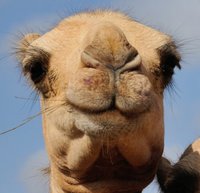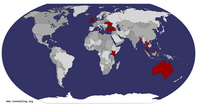COMING SOON HOUSE ADVERTISING ads_leader
There are only a few cities in the world where I have immediately felt welcomed and comfortable with the mood of the metropolis – Seoul is one such place. Unfortunately, my stay commenced in a rather inglorious manner. Usually I possess an acute sense of direction, but it completely deserted me upon arriving in Seoul. I was successfully able to navigate the comprehensive metro system, whose map (as with Tokyo) is comparable to a plate of coloured spaghetti, but I became hopelessly lost after leaving the station. I lumbered with two weighty backpacks for almost 90 minutes in order to find my hotel secreted within the lively streets of Insadong, not an agreeable experience when carrying twenty-five kilograms of luggage. Furthermore, this inexplicable situation occurred despite people offering directions, and one Seoul resident even called the hotel when unsure of my accommodation’s location.
Even though my stay in Seoul was characterised by dismal days of weather, they were more than compensated by the warmth of its residents. On one evening, a person who assisted in finding my hotel, a teacher called Hyekyeong, took me and another friend to dinner and afterwards escorted me to environs that I would not have
seen otherwise. Another remarkable piece of hospitality for a city of more than 10 million people, as such large population centres tend not to exhibit such traits.
The streets of Seoul possessed that usual Asian energy, but perhaps with more sophistication. Stylishly dressed women bestowed with beautiful eyes, and men clutching fashionable manbags, flowed between towering office skycrapers, the myriad of retail stores offering every conceivable consumer item, and food outlets serving the usual excellent Korean cuisine. Western-styled bakeries were also popular with hungry shoppers, and at least one resided on every city block.
The ubiquitous music monster that is K-Pop strongly inhabits shopping places in Seoul. Even on television, numerous channels (yes, whole channels and not just programs) are dedicated to talent contests. This phenomenon is so successful that it has ingrained itself into every nation within this region; travelling through Taiwan a week later I noticed that young people were not crowded around recordings of Taiwanese pop idols or their J-Pop equivalents, but were instead congregated around the now favoured K-Pop artists.
Whilst perusing the K-Pop talent contests on television, I uncovered the English language channel, Arirang TV that sprouted a stream of positive national
achievements, whether that be an increase in the country’s credit rating or further successes in the field of commerce and the arts. It was similar in content (but not style) to the news programs I’d witnessed in North Korea – propaganda in a different form, one might say.
Back outside, my sightseeing in Seoul was severely curtailed as my netbook needed repairs, and hours of precious time were expended in getting this essential piece of equipment successfully operating again. However, this did enable me to discover the wonderful array of gleaming electronic stores on offer around Yongsan. I have experienced some impressive electronic enclaves in Kuala Lumpur, Hong Kong and Taipei, but this is easily the grandest of them all. These holidays were beset with technological troubles, for a week later my MP3 player expired, but even more unfortunate was that it occurred after departing Korea, thus depriving me of a significant Korean shopping experience.
My truncated sightseeing time allowed me only a glimpse of Seoul’s multitudinous sights. The National Museum of Korea contained an impressive collection of beautifully lit and labelled galleries all housed in a modern, cavernous building. I could only visit one of the many
palaces in Seoul, and that was Gyeongbokgung, which reminded me of a smaller version of the Forbidden City in Beijing, but it still shared the same opportunities for exploration. Courtyards surrounded by distinctively traditional and vividly painted buildings could be enjoyed in almost complete solitude, with only brief interruptions as the occasional small group fleetingly passed through. Far busier was the hourly Changing of the Guard ceremony, where men attired in bold traditional clothes paraded to the beat of one of those impressive Korean drums. The only unfortunate aspect of Gyeongbokgung was a frantic (and successful) search for one of my mascots, Polly, who had fallen from my pocket during one of my rest periods.
The indisputable highlight of my time in the capital was the dazzling Seoul Lantern Festival. Stretching more than a kilometre along the Cheonggye Stream, this was a phenomenal array of hand-made illuminated lanterns depicting such subjects as Korean folk tales, culture and modern society. The streets overlooking the Festival were bustling with the many thousands of onlookers, whilst horse carriages with twinkling coloured lights and music encircled the festivities. The narrow walkways following the stream were crammed with people observing the best lanterns, with
one particular favourite being the two giant fire-breathing peacocks that elicited gasps of surprise and shock whenever its mouth opened to warm the cool autumn evening. The atmosphere was electrifying and joyous, and attending this spectacle further confirmed my belief that Seoul is not only my favourite city in Asia, but one of the great cities of the world.
The final part of my South Korean journey was a visit to what is considered to be the peninsula’s most glorious mountain range. The proposed drive on a Sunday afternoon to Seoraksan National Park in the Taebaek mountain range appeared easy, but I again became despairingly lost, which necessitated my first ever use of a GPS system. This despairing predicament could have been worse, for the motionless traffic jams heading towards Seoul extended for dozens of kilometres were less desirable. I would assume a similar situation if leaving the capital on a Friday evening or Saturday morning.
Due to my pre-GPS navigation catastrophe, my arrival in Seoraksan occurred after nightfall, and being a Sunday night, it was almost devoid of visitors. Accommodation on the mountain was surprisingly poor – tired and shabby places infected with the smell of stale
cigarette smoke. Thankfully, one does not travel to Seoraksan National Park solely to luxuriate within the hotels, for the main attraction is the dramatic scenery. Arising early on a brisk morning, I strode from the hotel to sight the mountains; and though the mostly denuded trees attested to the mostly foregone autumn colours, the gray granite rocks piercing the bright blue sky presented a stunning sight.
The day’s chosen hike was to the massive granite outcrop of Ulsanbawi Rock that lay approximately four kilometres from the Park’s entrance. The hike’s early section of more than two kilometres was an easy stroll passing shrines, streams and empty eating areas. Ulsanbawi loomed ever closer as the increasing incline that characterised the next kilometre brought more difficult conditions, with the many leafless trees providing a dour environment. However, the final 400 metres and most strenuous part of the hike scornfully awaited me.
A week earlier in Gyeonju, I informed two young Korean ladies of my intention to hike at Serokosan, and their excited reply was “No! No! Very hard, very hard!” Approaching the first of the 808 iron steps towards Ulsanbawi, I would soon discover what their definition of the term
“very hard” meant. The Park’s information board stated that the final 1.5 kilometres of this hike could be traversed in one hour, but I would challenge anyone apart from professional athletes and exceptionally fit hikers from completing this in the allotted time. I slowly trudged upwards, and with each step the whole stairway slightly vibrated and my legs ached a little more. The steps eventually ceased in favour of a natural path, so stooping underneath low rocky overhangs, squeezing past trees, and climbing over boulders took me further from the valley some distance below. The trail was barely marked in parts, but if one waited, the appearance of a descending hiker would reveal the proper path.
Puffing Koreans with hiking poles passed me, and I too heaved passed other hikers as this collection of heavy breathing and weary adventurers strained towards their goal. Finally, on ascending even more damnable iron stairs, the distinctive rocks of Ulsanbawi were revealed on my left, backed by an imposing column of mountains. Yet more stairs took me to a rocky outcrop that doubled as a lookout; I flopped onto the hard surface and admired the breathtaking view, which seemed appropriate since my breath
had been taken from me several times on the ascent.
The final night of touring South Korea was spent at the mountainous Alpensia area of Pyeongchang. Being a weeknight, and further because it was not in season, the immaculately clean resort was nearly vacant, and the cold nights revealed deserted streets. Pyeongchang will host the 2018 Winter Olympics, as promoted by the smiling face of one of my favourite athletes, Korean figure skater Yu-Na Kim, gracing a billboard upon entering the proposed Olympic area.
After savouring a prolonged hot shower, I retired to the splendid view from my room’s balcony at the Holiday Inn Resort, and reflected upon my time in the Republic of Korea. I arrived in this county less than two weeks prior with only modest expectations, but all have been surpassed by significant degrees, for it has excelled in all of my essential travelling ingredients – attractions, culture, food, history, people and transport. When combined with North Korea, the peninsula is only bettered by India and Syria as my favourite destination. My original intention was to only visit South Korea once, but after meeting the warm people, savouring the delicious food, and sighting the stunning
temples and mountains that grace this land, it would be remiss if my future travel plans did not include at least one return to this most enchanting of nations.
COMING SOON HOUSE ADVERTISING ads_leader_blog_bottom
Tot: 0.056s; Tpl: 0.02s; cc: 10; qc: 24; dbt: 0.027s; 1; m:domysql w:travelblog (10.17.0.13); sld: 1;
; mem: 1.2mb

































Chris and Nikki
Chris
Not only do you visit the most amazing places but you write the most fantastic blogs with photos to match. Excellent choice for your main picture, your blog destinations are fast becoming our wish list.